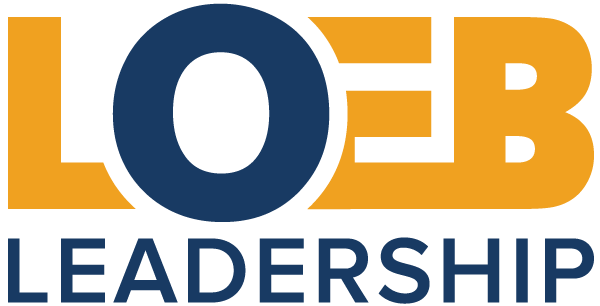
Diversity, Equity, AND Inclusion
“Diversity is a fact, inclusion is a choice.” - Michael Bach
Having a diverse organization is the first step toward meaningful inclusion, but every organization must make a choice about committing to the necessary changes to internal programs, policies, and behaviors that foster inclusion.
Giving everyone equal access to your organization’s value proposition (mentoring, career development, rewards, promotions, performance feedback, etc.) creates an environment in which everyone can thrive. And we know that engaged, diverse teams deliver better results: increased innovation, improved products and services, enhanced decision making, and more thorough problem-solving.
We understand the important role diversity, equity, and inclusion (DE&I) plays in your talent recruitment and retention, DE&I workplace culture, and your bottom line, and thus we offer a range of DE&I services to meet the needs of our clients.

Achieving Diversity, Equity, and Inclusion in the Workplace
-
A proactive DE&I strategy is just as much about opening your doors to diverse groups as it is about celebrating these groups. You can achieve diversity by asking the right questions within your firm, adjusting your recruitment strategies, and constantly monitoring your company's demographics to confirm alignment with your diversity goals.
Loeb Leadership has streamlined and optimized our diversity training in such a way as to ensure you receive customized feedback and support to meet your DE&I targets.
-
To be committed to equity in your workplace means you are truly taking steps toward ensuring the people in your work environment have a more fulfilling experience while engaging with colleagues. These steps typically include DE&I coaching and building on your DE&I leadership competencies.
You can achieve equity by making sure a person's identity (religious, gender, or otherwise) does not affect the outcome of advancement opportunities, and that fair treatment is allotted across the board.
Equity might involve what some see as going the extra mile in areas such as transport provisions, workplace standards, and job descriptions. For example, requesting specific areas of experience rather than years of experience is one way to increase equity in your talent acquisition.
-
An inclusive workplace requires a commitment from all leaders within an organization. There needs to be a shared vision about the intention and the benefits the organization and its people will gain by investing in inclusive practices. Inclusion efforts can be undermined or enhanced by those in positions of power. As a leader, you set the tone and have a responsibility to demonstrate your belief in the importance of an inclusive workplace. But inclusion is more than just talk. Leaders must be actively engaged in coordinated practices that ensure people feel a sense of belonging and can bring their true selves into work.
Inclusion helps to prevent or lessen demeaning situations where, for instance, new employees have to shield their identity or code-switch, which is when someone takes on characteristics or behaviors to “fit in.” All voices should be heard and respected. And people from all groups in your organization should hold some authority to make changes and decisions.
When someone shows bias in your organization, do you encourage self-exploration and awareness? During your organization’s regular daily activities, do you make sure each individual feels included? How do you show that you value diverse employees? How are you working to constantly grow your experience as someone who supports inclusion in your workplace?
Our DE&I Offerings
We meet our clients where they are. We understand that some organizations are looking to start a meaningful dialogue about how racism, sexism, and other forms of discrimination adversely affect the employee experience, while others are in need of more strategic support to help reshape programs and policies. We are here to help and offer customized training that aligns with your organization’s specific needs.
Additionally, all of our coaching and consulting services can be delivered with a focus on DE&I.
-
As we all strive to build empathy to better understand each other, we want to create work environments in which everyone can be their complete and authentic selves. To do this, we have to spend time listening to and understanding the lived experiences of all people. We understand this can be difficult. It’s not easy to engage in open, candid dialogue about sensitive topics such as race, ethnicity, gender, and sexual orientation and identity, especially when emotions are intense and the risks are high. Our moderated “safe spaces” can play an important role in helping to start these critical conversations at your workplace, and allow people to share their beliefs and perspective without fear of retribution or judgment.
-
These coaching sessions, moderated by one of our diversity experts, are intended to bring participants together to brainstorm and collaborate on either personal or professional DE&I challenges or opportunities. Participants can expect to gain new insights and skills to ensure they are positively contributing to a workplace environment in which everyone can thrive.
Cultural Competence Assessment
The Intercultural Development Inventory® (IDI®) is the premier cross-cultural assessment of intercultural competence that is used by thousands of individuals and organizations to build intercultural competence to achieve international and domestic diversity and inclusion goals and outcomes. For more information about the IDI assessment, visit our assessments page.
Additional Workshops
We also offer “ready to go” learning and development programs that can be delivered in 60 or 90-minute workshops. Courses include:
-
This class focuses on giving participants more than simple definitions and examples of unconscious bias. It explores the correlation between bias and the concept of binary thinking, which can lead to misunderstanding, judgment, isolation, and ultimately breakdowns in communication. This class will also provide the participants with tools and skills to mitigate their own bias, hold their peers accountable, and learn to navigate difficult conversations while controlling for bias.
-
This class serves as both an instructional and a practice environment for participants to improve their empathy skills. The topics covered will include Challenging Micro-aggressions, Creating Safe Spaces, Modulating Our Vocabulary, and Using Exposure for Growth. At the end of the class, the participants should be able to articulate how they will use their newfound information to reduce micro-aggressions in the workplace and create an environment of inclusion for all. This class uses examples of race, religion, gender identity and sexual orientation to highlight the need for intersectional acceptance and true inclusion in every way.
Real Talk with Loeb Leadership
DE&I is a topic close to our hearts at Loeb Leadership, and we’ve developed a webinar series titled “Real Talk: Turning DE&I Intentions Into Action,” in which we discuss current, relevant topics related to DE&I in corporate environments. Learn more and explore our past recordings on our Real Talk page.
-
While equality compels you to give an equal chance to everyone in your organization, some people might already be at an advantage simply because of their circumstances. Equity means you've removed structural or societal barriers and removed unfair advantages so you have a truly level playing field in your hiring process and within your organization.
-
Affirmative action refers to proactive policies and practices that aim to correct historical discrimination and increase the representation of underrepresented groups, such as racial minorities and women, in the workplace or educational institutions. It often involves setting specific goals and timetables for achieving diversity and may include preferential hiring or admission practices to achieve those goals.
Equal Employment Opportunities (EEO), on the other hand, focuses on ensuring that all individuals, regardless of their race, gender, age, disability, or other protected characteristics, have an equal chance to compete for job opportunities based solely on their qualifications and abilities. EEO laws and regulations prohibit discrimination in employment practices, including recruitment, hiring, promotions, and compensation, and require employers to treat all employees fairly and without bias.
-
Both DEI and EDI are acronyms for diversity, equity, and inclusion. However, some organizations choose to place an emphasis on equitable workplace practices, and in recent times have switched DEI around to become an EDI workplace, in order to highlight their focus on equitable practices and policies. Equity can make a significant difference in employee satisfaction and thus its resulting benefits, regardless of whether a company is diverse and inclusive.
DE&I In the Workplace
-
DE&I, which stands for Diversity, Equity, and Inclusion, is all about an organization's dedication to promoting a culture of acceptance and fairness and, when done correctly, leads to enhanced creativity, lower employee turnover rates, an improved reputation, increased innovation, better problem-solving, heightened decision-making skills, and optimized profits.
-
Strong DE&I practices in the workplace consistently yield powerful results, like increased employee retention, workplace satisfaction, and productivity. Employees who feel valued and accommodated produce a more cohesive, effective, and inspired team. As younger generations enter the workforce, strong DE&I commitments have become more of a requirement for hiring talent than ever before. Additionally, the impact of an organization's commitment to DE&I will directly affect its bottom line.
-
DE&I education and training is a mix of self-reflection activities, assessments, new hires training, engagement and performance boosting training, and leadership skills development. Loeb Leadership has a passion for diversity and inclusion training efforts.
DE&I In LEADERSHIP
-
Leadership plays a pivotal role in setting the tone for DEI efforts. Leaders should:
Champion DEI: Act as advocates for diversity and inclusion, both in word and action.
Set Expectations: Communicate clear expectations for inclusive behavior and hold everyone accountable.
Allocate Resources: Allocate the necessary resources, including time and budget, to support DEI initiatives.
Lead by Example: Model inclusive behaviors and demonstrate a commitment to DEI values.
-
Strategies for promoting diversity in leadership roles include:
Mentorship Programs: Establishing mentorship programs that connect emerging diverse talent with experienced leaders.
Sponsorship Initiatives: Identifying high-potential diverse employees and providing them with senior-level sponsors who advocate for their advancement.
Unbiased Promotion Processes: Reviewing promotion processes to eliminate biases and ensure fairness.
-
Our advice is to consult with DE&I professionals who can help you meet your DE&I goals in a genuine and impactful way. Initial steps might include conducting an internal DE&I audit to understand key strengths and areas for improvement and developing an action plan to address those opportunities. Loeb Leadership focuses on creating equitable organizations, employee development, and DE&I coaching. Contact us to get started!
Diversity, Equity, and Inclusion FAQ
Definitions
-
Diversity refers simply to allowing and encouraging differences in any given setting. In a workplace, diversity typically looks like the presence of various races, ethnicities, socioeconomic classes, personal and cultural backgrounds, physical and mental abilities, ages, sexual orientations, and gender identities.
-
Equity is making sure that each individual in a given environment is provided with the tools they need to succeed by taking into account their unique needs and circumstances. Equity ensures that opportunities are accessible and attainable to everyone. Equity focuses not on equal treatment of everyone, but on a true assessment of individual needs to ensure fairness.
-
Inclusion in the workplace ensures everyone feels a sense of belonging; that their voice is heard, and their contributions are valued. Inclusion ensures a person feels welcome to interact in all spaces of your organization, regardless of age, experience, gender identity, culture, ability, or otherwise.
-
Microaggressions are subtle, often unintentional, and brief comments, actions, or behaviors that convey derogatory or discriminatory messages towards individuals based on their race, gender, religion, or other protected characteristics. These actions can be harmful, even though they may not be overtly hostile.
-
Cultural sensitivity training involves making your employees aware of the nuances, differences, and similarities that exist between people of various cultures in the form of words, body language, gestures, and actions. It enables improved communication and helps nurture relationships between people of various groups in your organization.
-
Intersectionality acknowledges that individuals may have multiple aspects of their identity, and these aspects can intersect to create unique experiences of discrimination or privilege. For example, a Black woman may face different challenges compared to a White woman or a Black man. Understanding intersectionality is essential for more nuanced DEI efforts. It means recognizing that the experiences of individuals cannot be reduced to a single dimension of diversity (e.g., race or gender) but are shaped by a combination of factors. To address intersectionality, organizations can tailor their DEI programs to be inclusive of all identities and experiences and create spaces where individuals can discuss and navigate these intersections safely.
Prioritizing DE&I
-
Nearly all organizations' primary issues involve their talent, navigating the competition, and managing their stakeholders in some way or another. Not coincidentally, diversity, equity, and inclusion all have an impact on these three areas: DE&I boosts employee engagement and increases your profit, it improves your reputation compared to competitors, and it enhances the perception stakeholders have of your organization. Making DE&I a priority may help resolve some of the other issues your organization is facing along the way.
-
If an organization's leaders do not make DE&I in the workplace a priority, employees are much more likely to lose confidence and motivation, and ultimately quit. Organizations with high turnover rates often struggle to function seamlessly as talent is frequently shifting; a shortcoming that can impact customer satisfaction and loyalty. Low retention and low consumer loyalty both have costly consequences, and could ultimately mean the success or failure of the entire organization.
-
It is very possible to measure inclusion, diversity and equity in the workplace by the numbers! One way is to take your firm's employee replacement costs, and salary data, and measure the difference in turnover rates before and after implementing diversity, inclusion, and equity at work.
-
To make DEI a lasting commitment, organizations should integrate it into their core values, mission, and long-term strategic plans. This involves:
Leadership Commitment: Having leaders who champion DEI and set an example through their actions and decisions.
Embedding DEI: Infusing DEI considerations into all aspects of the organization, from hiring and promotion to product development and customer relations.
Regular Evaluation: Continuously assessing the effectiveness of DEI initiatives, collecting data, and making adjustments as needed.
Training and Education: Providing ongoing training to employees to raise awareness and build the skills necessary for sustaining a diverse and inclusive culture.
Accountability: Holding leaders and employees accountable for their actions and contributions to DEI goals.






